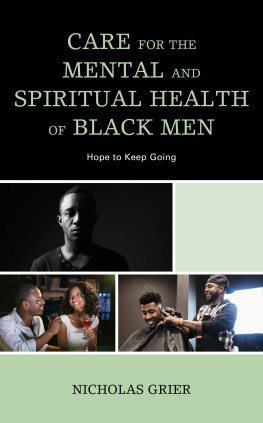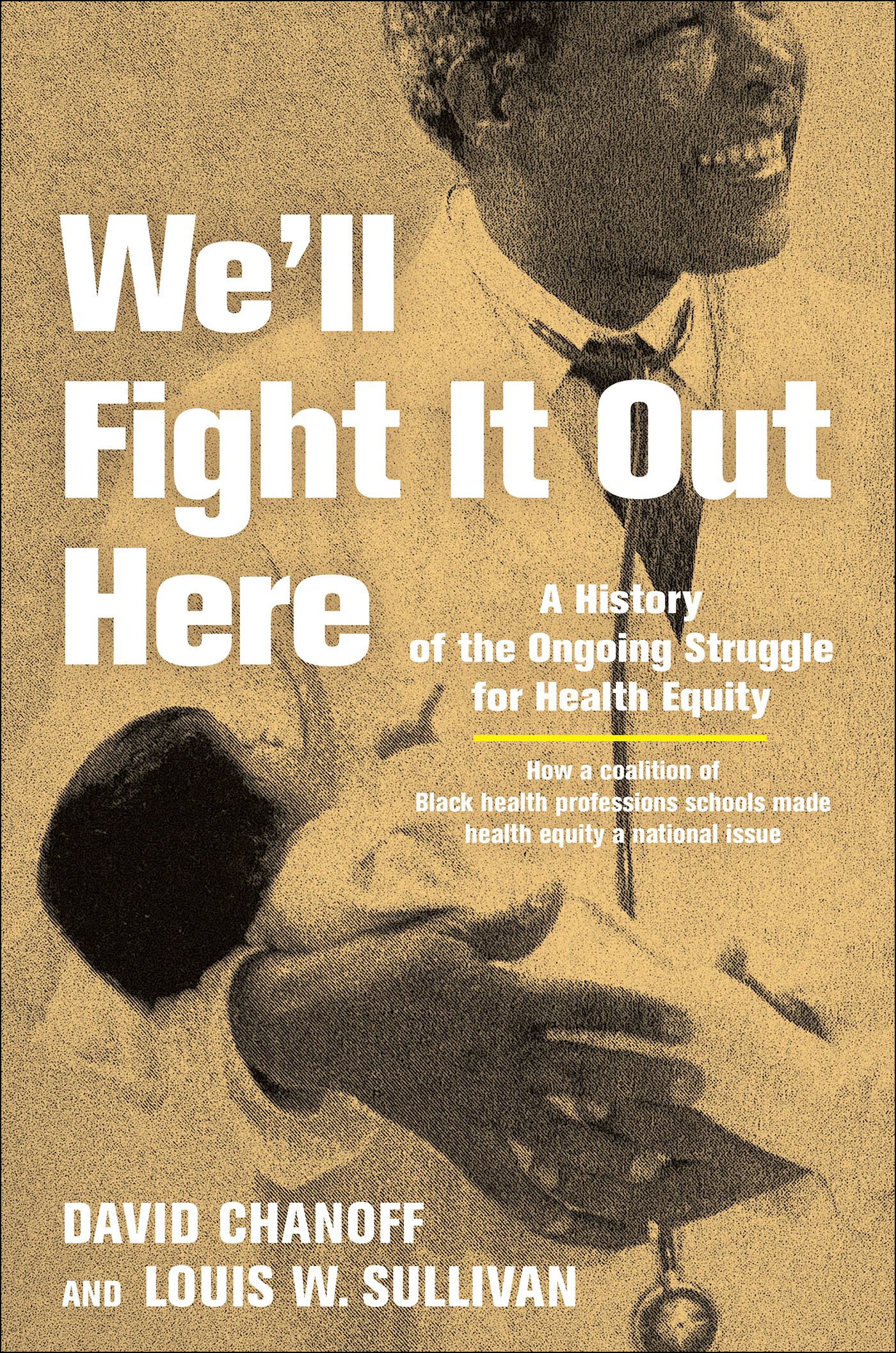Contents
Guide
Praise for Well Fight It Out Here
This inspiring, engaging, and informative book describes not only the systemic barriers African Americans faced but also the extraordinary agency Black leaders demonstrated in overcoming some of these obstacles. At a time when health disparities have gained national attention, this is a story of solutions and hope, beautifully told.
Kenneth M. Ludmerer, MD, Washington University in St. Louis, author of Let Me Heal: The Opportunity to Preserve Excellence in American Medicine
Well Fight It Out Here is a David and Goliath legislative story of how a small and dedicated group of health professionals battled to eliminate health disparities and push through Congress legislation that opened up first-rate medical care to African Americans. It is a historical gem of how participants in the legislative process in Washington can be persuaded to do the right thing for those in greatest need.
Joseph A. Califano Jr., former US Secretary of Health Education and Welfare
This is an essential work on American medical history and its place in the fight for racial justice. The story is dramatic and lucid. The book should be mandatory reading for college courses and for anyone interested in Americas ongoing search for racial equality. It represents a milestone in writing on medical history and should be part of the core knowledge of all those who care about equitable and human health care.
Augustus A. White III, MD, PhD, Harvard Medical School, author of Seeing Patients: A Surgeons Story of Race and Medical Bias
An amazing story of grit, determination, and perseverance to advance Black and minority-serving health institutions. To have a more just and equitable nation, more attention and support must be given to the cherished institutions that compose the Association of Minority Health Professions Schools.
Wayne J. Riley, MD, MPD, SUNY Downstate Health Sciences University
WELL FIGHT IT OUT HERE
Well Fight It Out Here
A History of the Ongoing Struggle for Health Equity
DAVID CHANOFF AND LOUIS W. SULLIVAN
 JOHNS HOPKINS UNIVERSITY PRESS | BALTIMORE
JOHNS HOPKINS UNIVERSITY PRESS | BALTIMORE
2022 David Chanoff and Louis W. Sullivan
All rights reserved. Published 2022
Printed in the United States of America on acid-free paper
2 4 6 8 9 7 5 3 1
Johns Hopkins University Press
2715 North Charles Street
Baltimore, Maryland 21218-4363
www.press.jhu.edu
Cataloging-in-Publication Data is available from the Library of Congress
ISBN 978-1-4214-4464-2 (hardcover)
ISBN 978-1-4214-4465-9 (ebook)
A catalog record for this book is available from the British Library.
Special discounts are available for bulk purchases of this book. For more information, please contact Special Sales at .
To the Memory of Louis Stokes
Health Care Champion for the Poor and Underserved
PREFACE
A hundred and thirty years before the COVID-19 pandemic cast its harsh light on the deadly reality of racialized health disparities, the leading statistician of the Progressive Era set himself the task of determining why it was that African Americans were more prone to serious disease than white Americans. Why were African Americans sicker than whites, Frederick Hoffman asked. Why did they die at faster rates and live shorter lives?
Since childhood Hoffman had been obsessed by numbers, and since his emigration from Germany to the United States at age nineteen he had been equally obsessed by the differences between white and Black Americans. In 1896, working as a statistician for the Prudential Insurance Company, he released a book-length study, Race Traits and Tendencies of the American Negro, a compendium of data and analysis detailing the reasons for the difference between the health of Blacks and whites. The study was published by the American Economic Association in two successive issues of its official journal, which attested to the works credibility and helped make Race Traits the most influential social science document of its time. In mathematically precise terms Hoffman conveyed a devastating picture of Black health in America. The data, he said, pointed to only one conclusion: the Black race was on a one-way path to extinction.
His conclusion, Hoffman declared, was based wholly on incontrovertible facts and numbers. Prejudice had no part in it. Having come to America as an immigrant, he had never been exposed to or influenced by the racist assumptions so prevalent in his adopted country. Being of foreign birth, a German, he wrote, I was fortunately free from a personal bias.
Hoffmans study was widely considered a triumph of objective statistical analysis. But there were detractors as well. Some of his opponents, including the famed Black sociologist and historian W. E. B. Du Bois, pointed out that his analysis was defective on various counts and, despite Hoffmans claims, unscientific. Hoffman had not compared Black mortality rates with those of similarly impoverished white groups. He had neglected to consider the weight of social determinants in the mortality numberspoor nutrition, housing, and clothing; subpar education; and job discrimination. The high Negro death rate, Du Bois explained, was attributable to the differences between Black and white conditions of life. And even given those circumstances, the high death rate didnt threaten the extinction of the race.
Hoffman answered that it is not in the conditions of life, but in the race traits and tendencies that we find the cause of excessive mortality. Black people, he said, had a race proclivity to disease and death. They were, simply put, biologically inferior to whites, and that inferiority was leading them inevitably down the road to racial collapse.
Time proved Hoffmans extinction thesis a myth. African Americans did not die out. On the contrary, their numbers grew. The 1910 census found that the 8.8 million African Americans counted in 1900 had, in ten years, grown to 9.8 million, an increase of 11 percent. Du Bois was right, Hoffman wrong.
But although African Americans were not doomed to extinction, the numbers Hoffman had based his calculations on were not by themselves misleading. It wasnt the numbers that were wrong; it was the racist framework that dictated his flawed methodology. In 1900 the Black mortality rate was 70 percent higher than the white. White men and women could expect to live many years longer than their Black counterparts. Black infant mortality rates were especially alarming: 371 Black babies died out of every thousand live births, compared with 158 white babies. Savannah, Georgia, had the highest rate, an astonishing 409 Black infant deaths per thousand live births. Du Bois called it the slaughter of the innocents.
Among the social and environmental reasons that Du Bois and others noted for these disparities, one of the most glaring was the lack of medical care available for African Americans, most especially in the rural South, home to almost 90 percent of the Black population. In 1895, the year before Hoffmans Race Traits was published, there were approximately nine hundred Black doctors in the country, many practicing in isolated rural areas with little or no access to contemporary developments in medical science and no hospitals to which they could admit patients. No Southern medical school accepted Black students; of the few schools in the North that would even consider applications from African Americans, it was rare for a Black student to gain admission. A small flow of doctors emerged from the seven Black medical schools that existed at the turn of the century, most of which were threadbare institutions perched perilously on the verge of collapse. Only two of the seven, Howard Medical School in Washington, DC, and Meharry Medical College in Nashville, Tennessee, survived the stringent evaluations of the Carnegie Foundations 1910 Flexner Report, a review of all medical schools in the country by Abraham Flexner, an educator and reformer.








 JOHNS HOPKINS UNIVERSITY PRESS | BALTIMORE
JOHNS HOPKINS UNIVERSITY PRESS | BALTIMORE